Hot Fire Test: Embry-Riddle Club Launches Students’ Rocket Ambitions
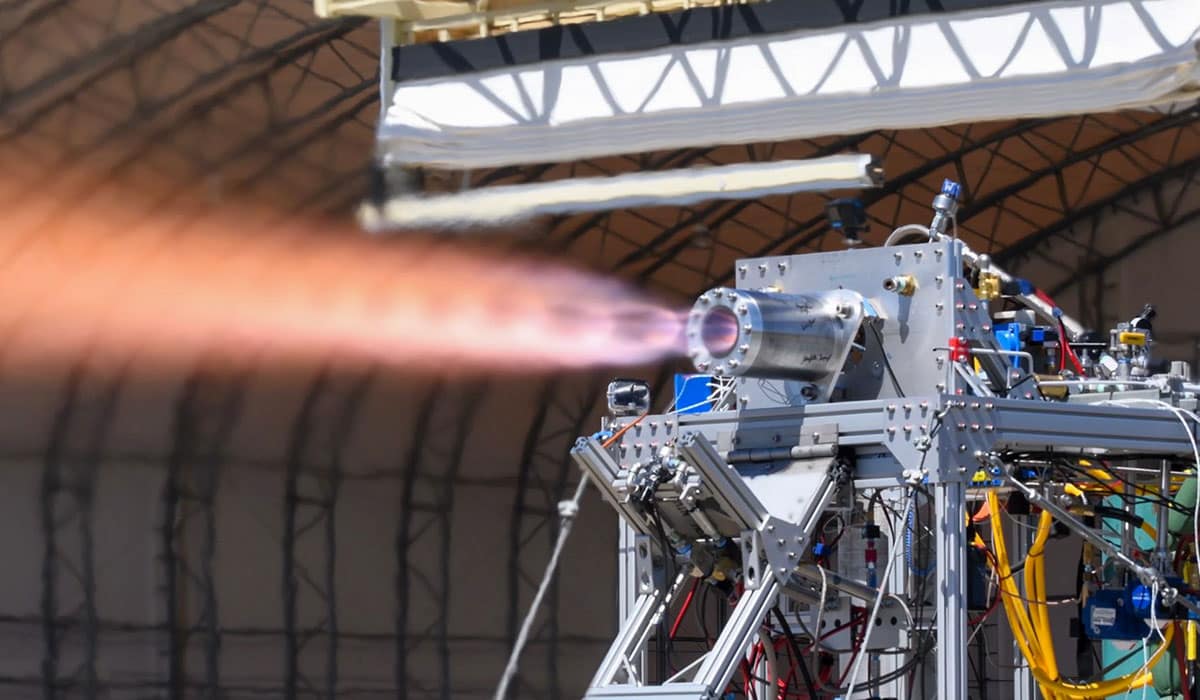
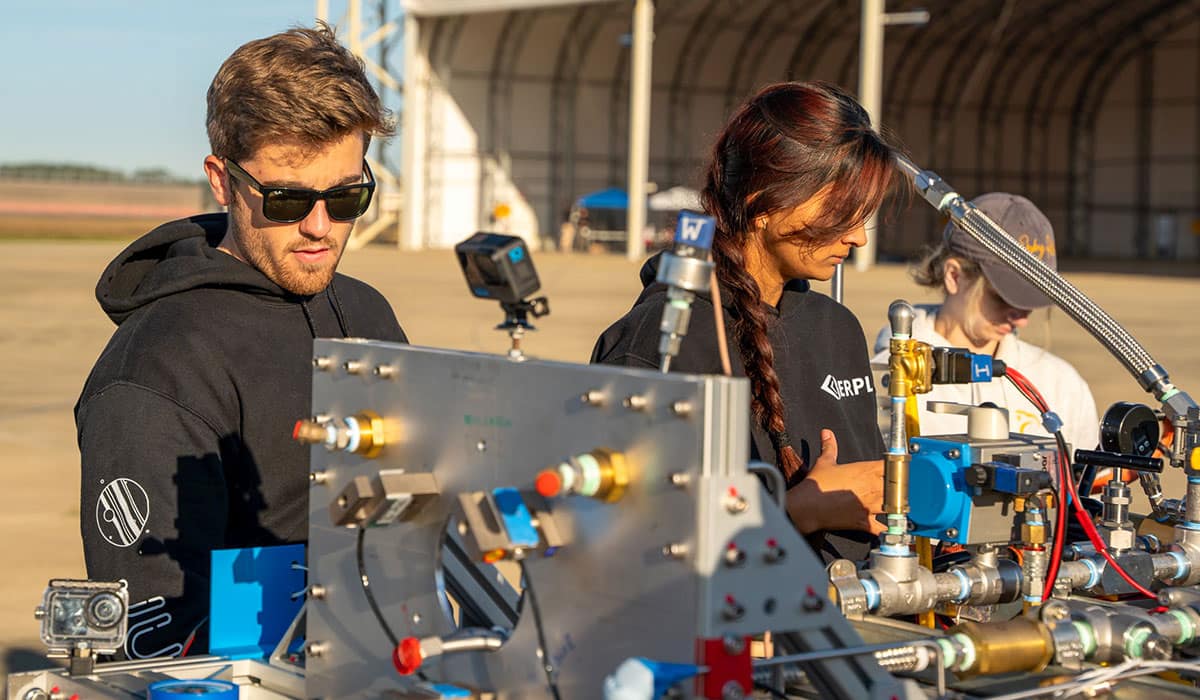
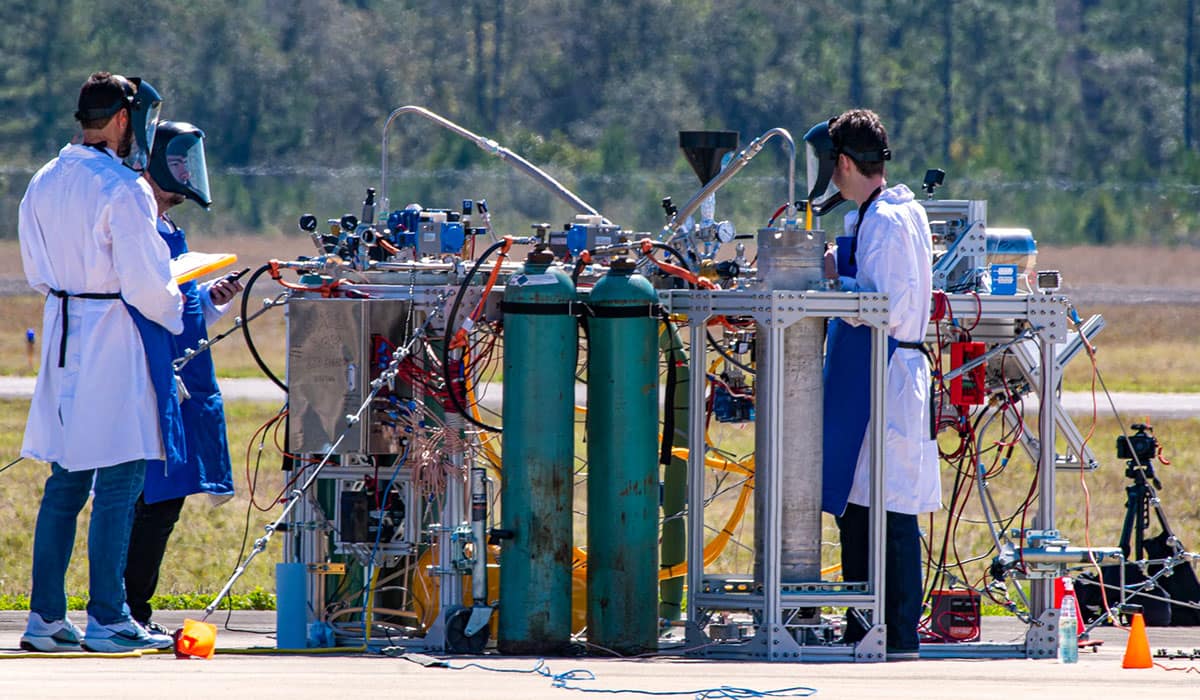
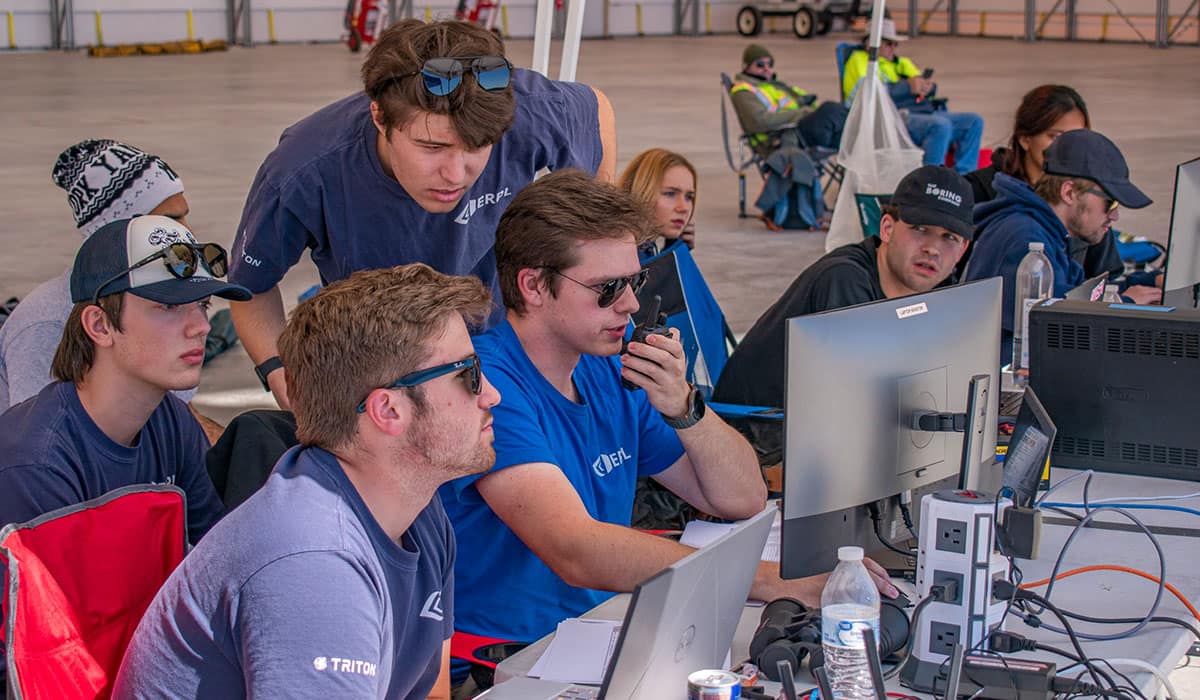
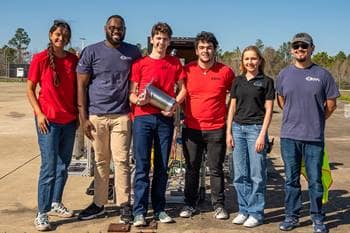
Project Triton’s original design team — ERPL club members (from left) Sakshi Khidake, Justin Robinson, Matthew LaBombard, Travis Sevin, AJ Giza and Josafath Lopez Villages — celebrate the rocket engine’s first successful hot fire. (Photo: Embry-Riddle/Darren Nguyen)
Last spring, Justin Robinson was among the first freshmen to join a new program at an Embry-Riddle Aeronautical University rocket club, where new members learn the basics of designing and building a rocket engine from the ground up.
Just ten months later, Robinson is part of a team that created and test-fired Project Triton — the most powerful rocket engine built in the history of the Experimental Rocket Propulsion Lab (ERPL) on the Daytona Beach Campus. Robinson, who is now a sophomore and is majoring in Aerospace Engineering, and the team collaborated on the successful hot fire this spring at Cecil Spaceport in Jacksonville, Florida.
“It was very exciting. It’s another world and something I never thought I’d be able to do,” said Robinson. “Very few people get to say they designed, built, and test-fired their own rocket while still in college.”
Powered by ethanol and liquid oxygen, the Project Triton rocket raised the bar for the rocket team, setting the club's record for the fastest engine designed, manufactured and test-fired.
“Project Triton is designed to produce about 1,000 (pounds) of thrust, which is about three times more than our previously hot-fired liquid engine,” said AJ Giza, project lead for Triton and a sophomore Aerospace Engineering student from Arlington, Virginia.
Giza said the Triton team has completed two successful hot-fire tests at Cecil Spaceport, both of which provided valuable data. The team plans to continue testing Triton next semester.
“Usually, these projects are initiated by juniors and seniors, but Triton is the first freshman-designed and built engine, Giza said.
Aiden McCollum, a senior Aerospace Engineering student and president of the Experimental Rocket Propulsion Lab, said the club’s program for new members builds a pipeline of talent for the rocket team and helps freshmen gain immediate hands-on experience that connects to classroom learning.
“It’s fun to see it click in their heads all of a sudden,” said McCollum, who is from Fort Collins, Colorado, and has interned for SpaceX and Collins Aerospace. “And because of the unique experience you get from day one in ERPL, getting an internship or job in the space industry is much easier.”
Ideas Take Off
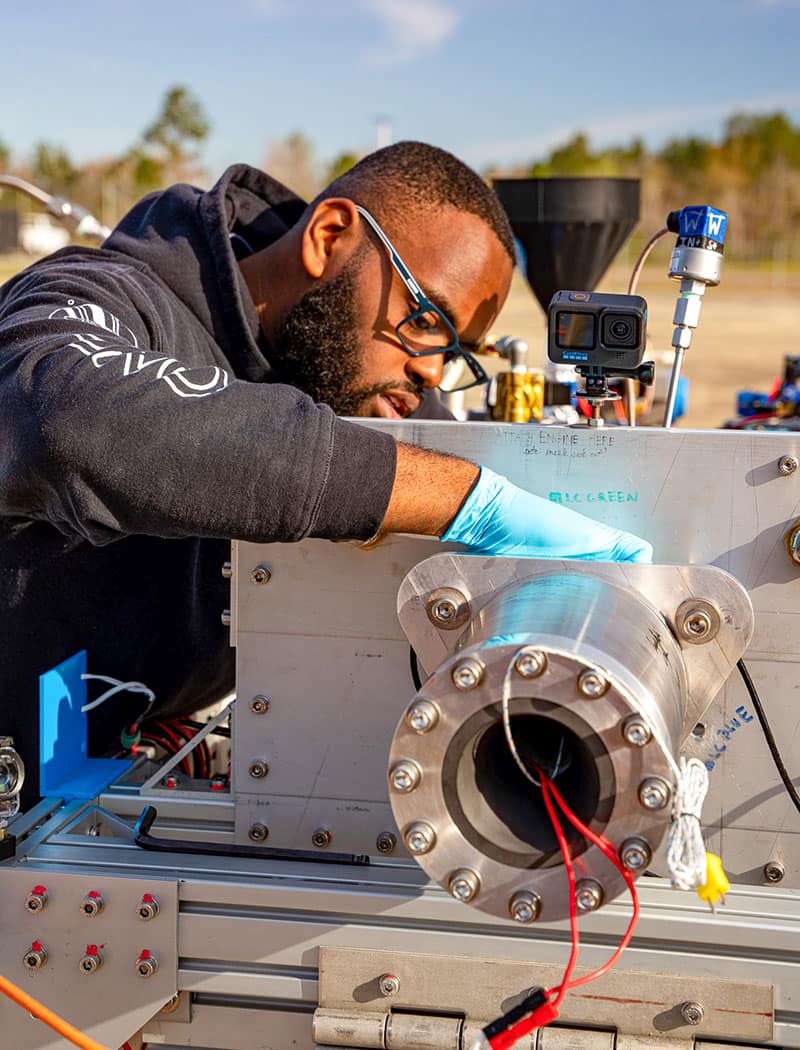
ERPL member Justin Robinson, a sophomore Aerospace Engineering student, works on Triton's feed system connections prior to hot fire. (Photo: Embry-Riddle/Darren Nguyen)
Robinson, who is from the Milwaukee, Wisconsin area, was part of his high school’s aerospace engineering program, so he already knew he was interested in propulsion when he came to Embry-Riddle. Eager to get his hands dirty building rocket engines, he jumped at the chance to join the Experimental Rocket Propulsion Lab.
“It feels surreal that just a couple of months ago Project Triton was an idea on a computer screen,” said Robinson, who serves as the organization’s public relations officer and Triton’s manufacturing responsible engineer. “Being able to take something like that and turn it into reality proves how hardworking people with a common goal can come together and do some pretty amazing things."
The club’s new members program started with about 40 applicants. Divided into groups of up to six, they learned how to build a rocket engine with injectors and chambers. While they were taught the basics, they were also expected to do their own research. The Project Triton team was later formed from all the teams, taking one person who excelled at each specialty.
Over the summer, the Project Triton team members continued to work on the rocket engine online, collaborating over Discord for hours each week.
"The Triton engine is more than just a design project, it's a full cycle engineering experience,” said Matt LaBombard, Project Triton’s thrust chamber engineer who is an Aerospace Engineering student from West Virginia. “We are continuing to learn about the engine through data analysis and plan to improve on this design into the future.”
The Next Phase

AJ Giza, the project lead for Triton, stands near the rocket engine before its hot fire test. (Photo: Embry-Riddle/Darren Nguyen)
The club’s members are already looking ahead to the next, more powerful engine — Project MOE. MOE is a flight vehicle engine designed to reach 60,000 feet in altitude. The goal is to launch the rocket at the Friends of Amateur Rocketry (FAR) launch site in the Mojave Desert in California.
Project MOE would compete in FAR’s Dollar Per Foot Challenge, a competition for single-stage, liquid-propellant rockets built by U.S. and Canadian colleges and universities. If the rocket launches and lands safely with only minor damages, the team receives $1 from FAR for every foot of altitude above the end of the launch rail.
“We are aiming to launch MOE in May of 2026, and we will receive a $60,000 prize if we successfully launch and recover our rocket,” said Adam Duke, an Aerospace Engineering graduate student from New Smyrna Beach working on Project MOE.
The rocket club receives funding for its projects from the Student Government Association, College of Engineering and College of Engineering Philanthropy Council, said McCollum. Blue Origin, 3DCS, MasterCam, and SendCutSend are also club sponsors for 2025.
“The entire Embry-Riddle community has chipped in to help us succeed,” McCollum said.

 Melanie Stawicki Azam
Melanie Stawicki Azam